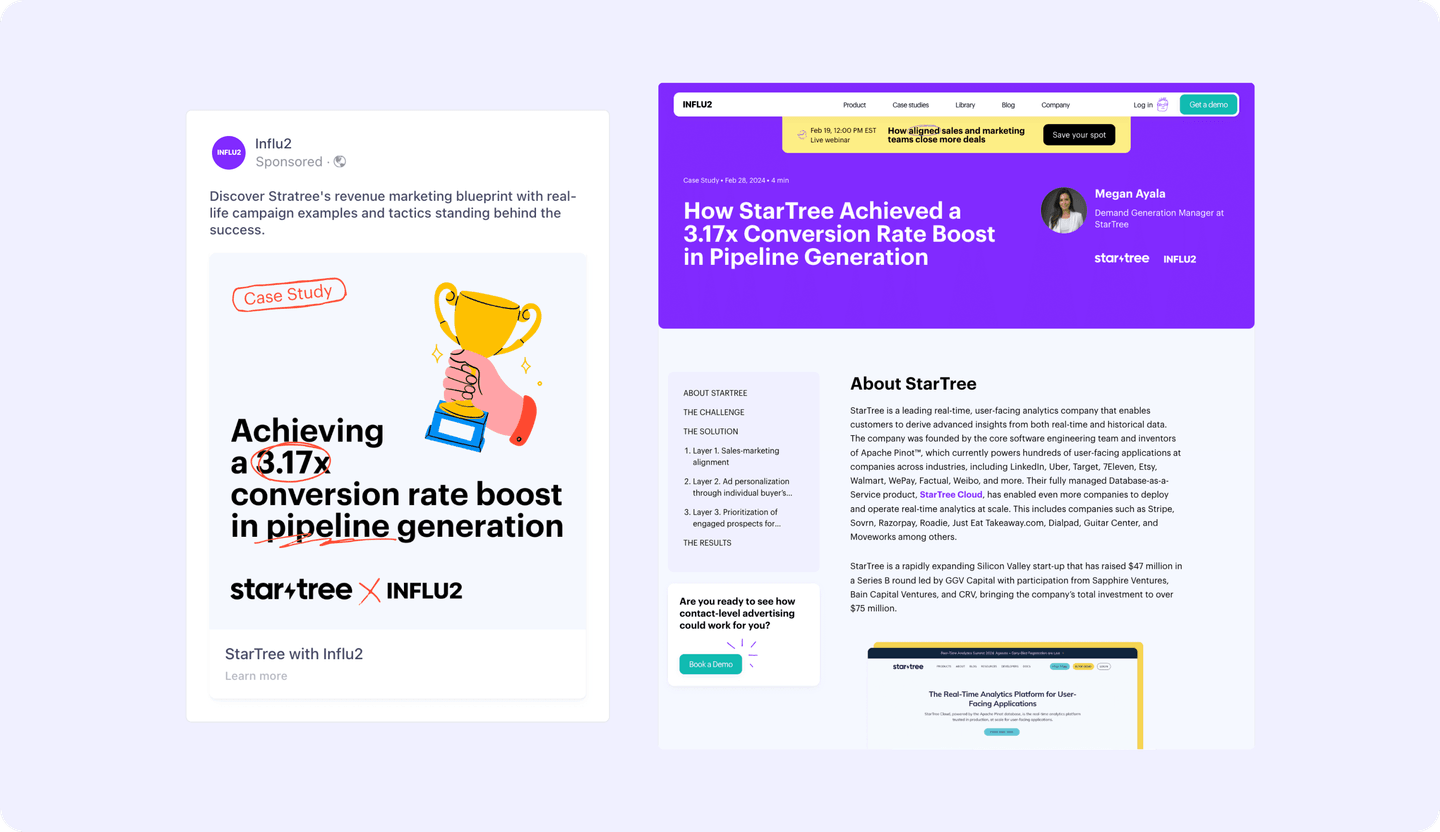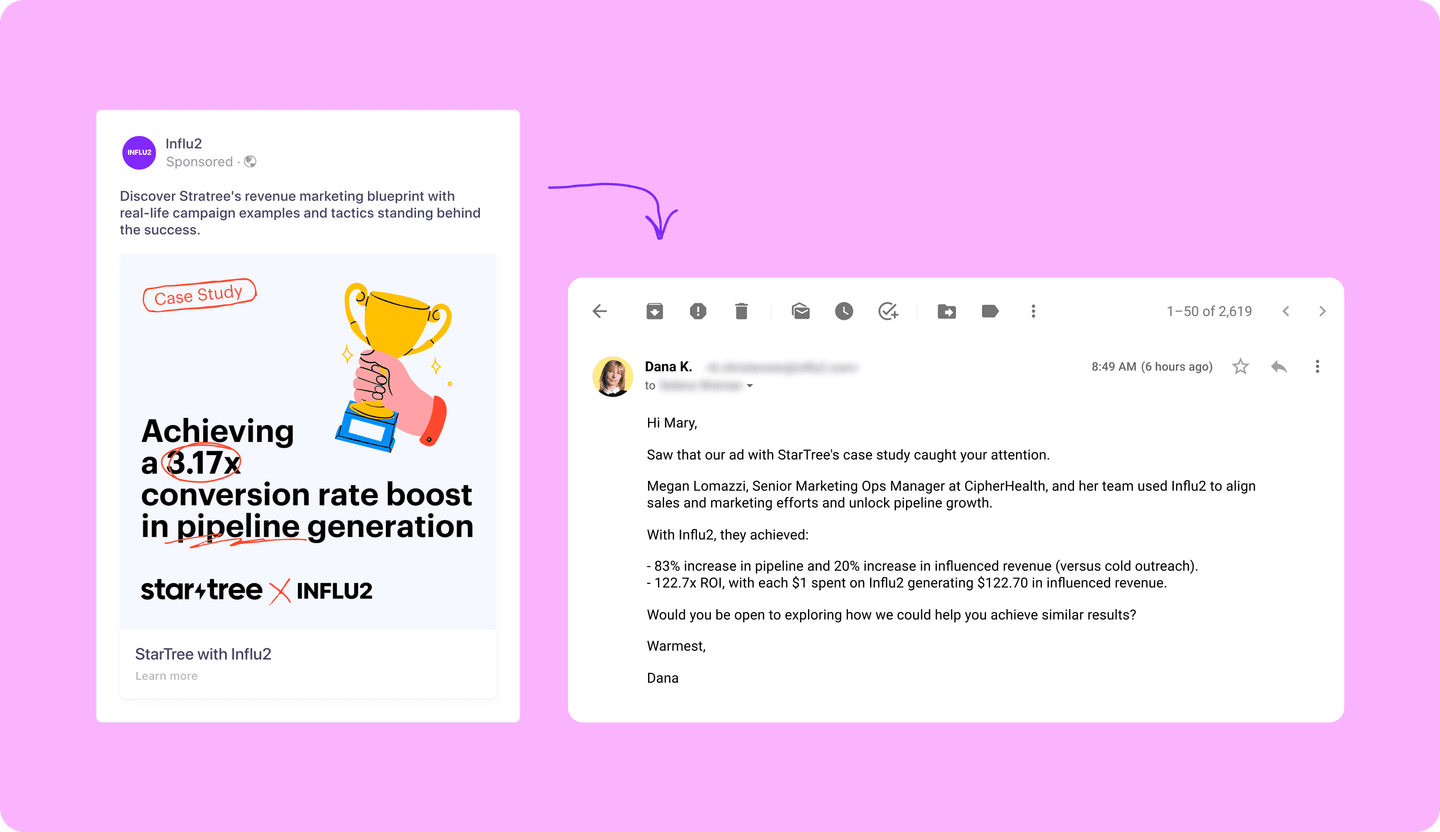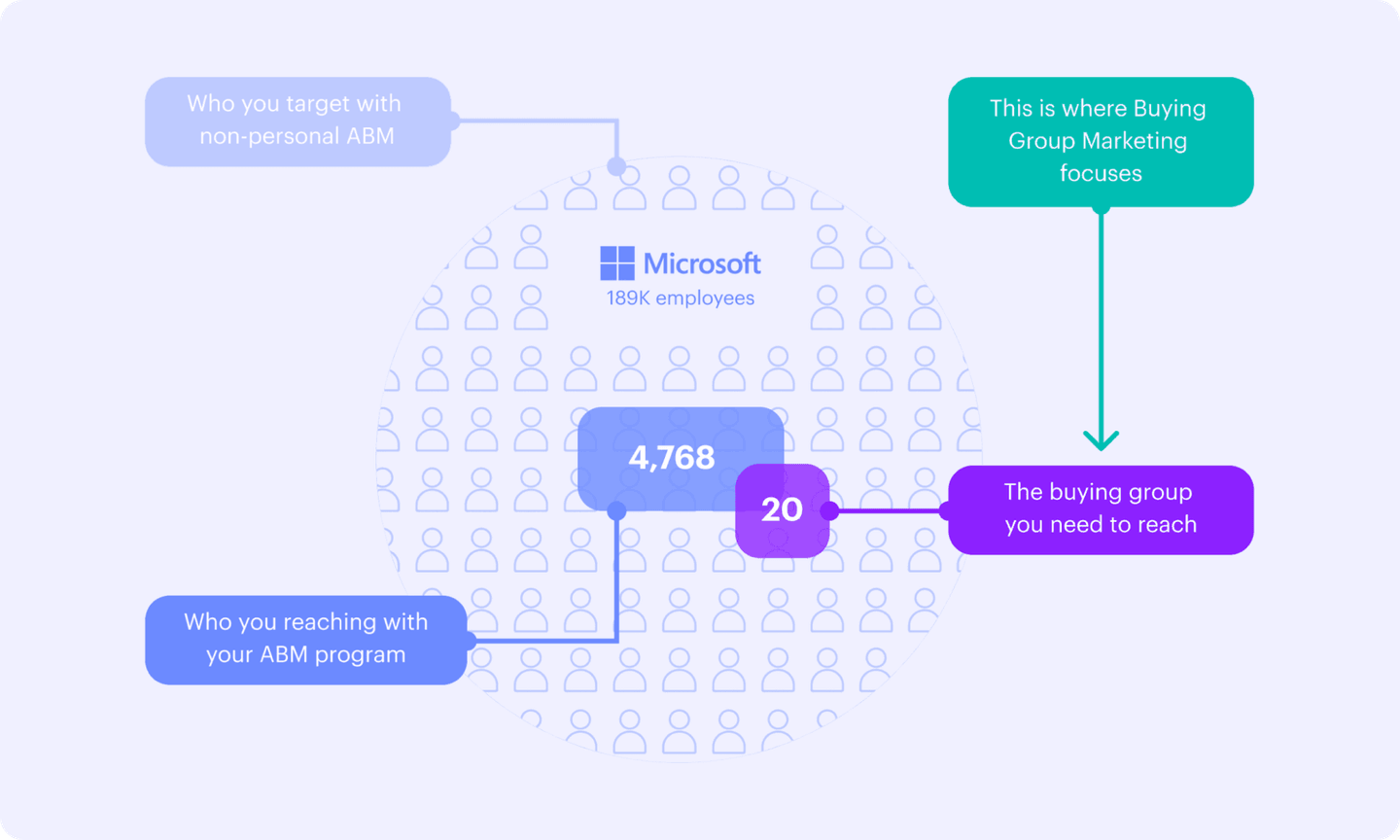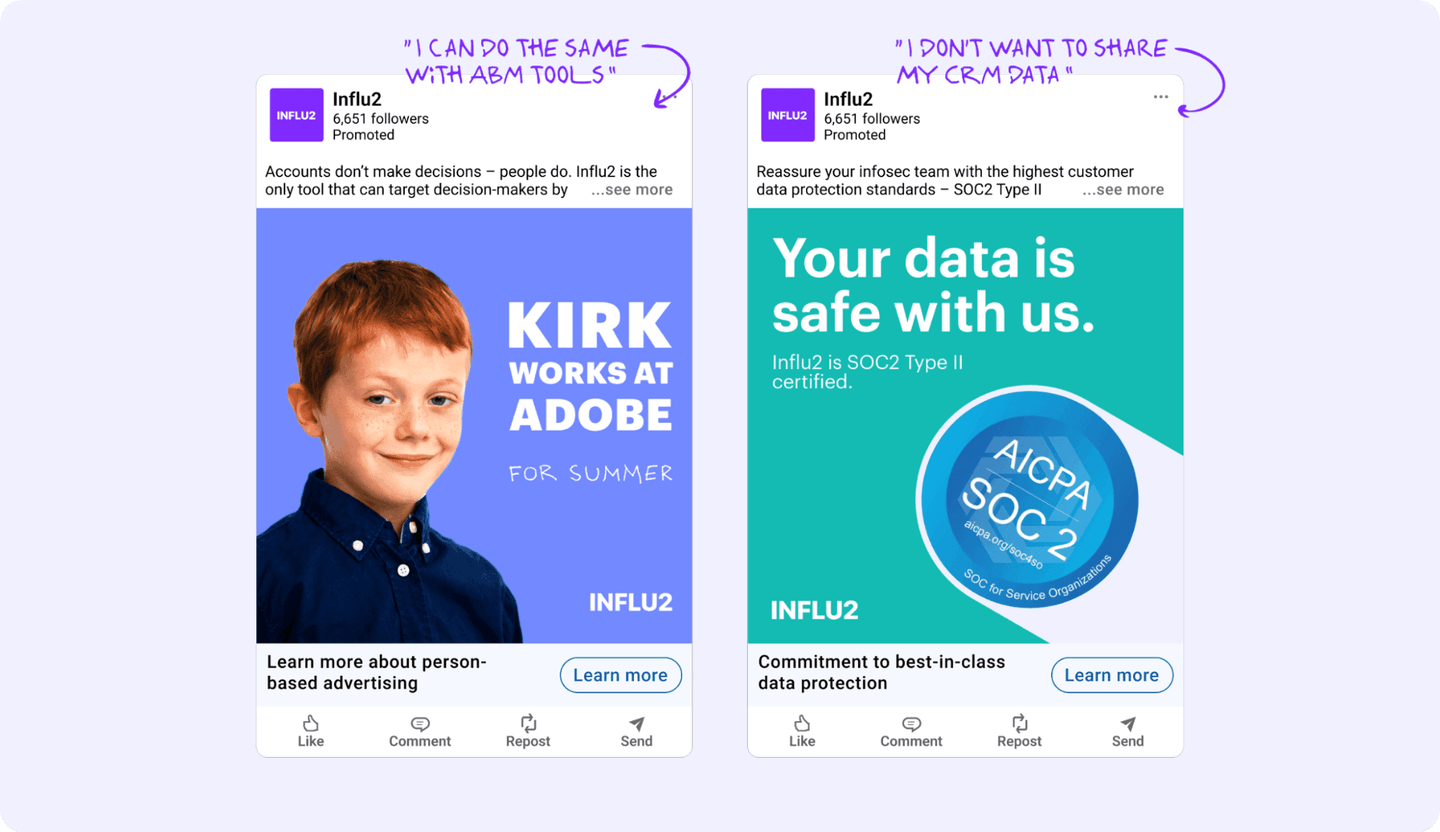First-Party Intent Data Shows You What 3rd-Party Can’t
A lot of revenue leaders are feeling burned right now.
Players in the third-party data space have sold the dream: the ability to instantly build a list of in-market buyers and target them with messaging that aligns with their precise goals and pain points.
In practice, it's not quite so dreamy according to GTM Advisor Andy Mowat.
Third-party intent is always sexy. The ability to buy a list of who is searching for what you do sounds amazing BUT…virtually every GTM leader I’ve spoken with struggles to get value out of third-party intent data.
But is first-party data the silver bullet revenue leaders are searching for?
First-party vs. third-party intent data: A bird’s-eye view
A couple of definitions are in order:
First-party data is data you collect from your target audience, such as through your website, ad programs, and product analytics.
Third-party data refers to information that another company collects and then provides to you for use in your Sales and Marketing programs.
Each has its place in a good GTM strategy, although there are some clear limitations to third-party data that make its first-party counterpart a smarter place to focus.
First-party intent data = data you collect
First-party data comes from people's direct interactions with your company.
It's data that you collect directly from:
- Lead forms (details the lead provides, such as their job title, company size, and pain points)
- Ad engagement (which messaging resonates with which buying committee members, based on clicks and views)
- Your website (using website deanonymization software to track how visitors engage with your site)
- Social media (how customers and prospects interact with your brand on LinkedIn and other social sites)
- Email (using email marketing software to track engagement metrics)
- Product analytics tools (how users interact with your product)
- CRM, marketing automation, and sales engagement software (such as the account’s stage in the pipeline)
- Internal communication tools (like Slack conversations between Sales reps or Fathom recordings of Sales demos)
Generally speaking, first-party intent data is more actionable, reliable, and, overall, a stronger indicator of buying intent.
The main downside is its lack of breadth: you can only collect first-party data from people who interact directly with your brand.
But as Steve Armenti, CEO & Founder of tweflth suggests, you can combine third-party and first-party data to paint a full picture of buyer intent.
The real goal with intent data is to find the intersection of many types of signals… If you find the intersectionality of signals, you can get what I call "marketable propensity"—not to buy, but to engage. You've found something interesting that you can use to get a prospect to engage with you.
Third-party intent data = data someone else collects
Third-party data comes from other organizations.
It includes information like what prospects search for on Google, what content they’re engaging with on social, and what they’re reading on review sites.
Some of it's free, like reading a review from one of your competitors’ upset customers. Most of it (and almost all of the stuff we care about in the B2B world), though, you have to pay for.
Companies like Cognism and Apollo sell B2B company and contact data—phone numbers, email addresses, and firmographic intel of buyers who might be “in-market”.
Then you’ve got GTM platforms like 6sense, ZoomInfo, and Demandbase, which all integrate multiple sources of data, such as ad bidstream data, Bombora search data, and engagement with review pages on G2.
But the big problem that many revenue leaders have with third-party data is its lack of specificity. A lot of the time, the data only goes to the account level, telling you something like “Someone at Google visited your website.”
Plus, it generally can tell you someone’s shown interest in a topic or industry, not specifically your product.
That’s not a whole lot to work with, and that’s where first-party intent data usually wins: it's much more precise and, therefore, a lot more practical for revenue teams to act on.
Why revenue teams should invest in collecting and creating first-party data
There’s a lot of chatter on LinkedIn and on GTM-focused Slack and Discord channels about this “first-party vs. third-party” debate.
In reality, it's a false dichotomy.
It’s not a case of one or the other—it's both, in the right context, at the right time.
The problem is, though, that many Revenue teams are over-indexing on the third-party side, in part due to its accessibility. All you need to do to start collecting third-party data is buy a subscription with a data provider.
Collecting first-party intent data requires a more nuanced, intentional strategy and often requires a different set of tools.
But the juice is worth the squeeze. Here’s why.
First-party intent data is more actionable
One of the big complaints about third-party data is that while there’s a ton of it, not all of it is actionable, and over-relying on low-intent signals can generate uninterested or unqualified leads that might not even fit your ICP.
First-party data, in many cases, is more directly actionable.
For example, at Influ2, we get first-party intent data through contact-level ads. We show ads to the exact contacts our sales team is targeting (synced directly from our CRM), and monitor when they engage.
Here’s how that provides more actionable insights.
Let's say we run ads promoting our pipeline generation use case.

A VP of Demand Generation in one of our buying committees clicks on our ad, giving us a first-party intent signal (even if they don’t fill out a form): that stakeholder cares about generating pipeline for their business, and is now familiar with our brand.
We can then immediately act on this insight by showing that specific person more content related to that topic.
We can also feed this data back to Sales to help them ensure the messaging they use in their outreach program is relevant to that specific buyer and aligns with your ad air cover.

First-party intent data is more precise
When it comes to actually using intent data to fine-tune your sales motion, precision matters.
The problem with a lot of third-party data is that it just isn’t precise enough. It might tell you that someone at Google viewed your site, but they don’t often tell you who.
That’s not to say that third-party intent data can’t be contact-level data; it's just that first-party data is much more precise and granular.
Say Microsoft is a target account for you, and your ABM tool tells you that someone from Microsoft has been browsing your website and also doing category research on G2.
That’s interesting, sure, but it's not precise enough to be actionable.
Microsoft has more than 200,000 employees, and only one-hundredth of one percent of them have some kind of say on whether they buy your tool or not.

So what do you do with that intel from your ABM tool exactly? Not a lot, which is why salespeople often ignore them.
Now, imagine you’re running contact-level ads with Influ2. You’ve identified the stakeholders you think are in the buying group, and you’re targeting them with relevant ads meant for their buyer persona.
Influ2 doesn’t just tell you that “someone at Microsoft” clicked an ad. It tells you which person saw which ads how many times and which ones they clicked.

There’s a lot more you can do with that data. It helps salespeople prioritize their outreach and provides a starting point for what to say.
First-party intent data enables more unique, personalized outreach
For a lot of reps, simply cutting through all the noise is the biggest battle.
Third-party data doesn’t provide much help here, since you have access to the same intent signals as your competitors.
When Amir Reiter, CEO at CloudTask, put out a simple post looking for marketplace SEO experts, here’s what happened:
He got hundreds of emails, LinkedIn messages, cold calls, and calendar invites from sales reps and had to take the post down just to stop the outreach.
It's easy to see why companies like 6sense and Demandbase have started to get negative press on LinkedIn. The problem isn’t the intent data itself; the issue is the non-exclusive nature of the approach. Even if the data is accurate, the experience of being swarmed by so many vendors often leads to no sales at all.
First-party intent data, on the other hand, is completely unique to you. Nobody else has what you have.
Think about how a prospect engages with the educational content on your website. Nobody else has access to the data from those pages views, meaning there’s a unique opportunity for you to stand out.
For instance, you could track the behavior of two different buying group members on your website. Maybe the RevOps leader is downloading whitepapers on tech stack compatibility, while the CMO is more interested in case studies related to ROI.
Marketing can then provide air cover to support the AE’s objection-handling with relevant contact-level ads.

How to create first-party intent data with ads
Third-party data almost by nature forces you to be reactive, waiting until you receive a signal from your tool.
While first-party data can be reactive (like waiting until someone lands on your website), Marketing can proactively create first-party intent data for prospects your Sales team is actively pursuing, using Influ2’s contact-level advertising.
In Influ2, once you’ve mapped the contacts you want to go after, you can start showing them ads to collect first-party intent data instead of waiting for them to find you.
Each time someone engages with a piece of content, you’re generating new intent data.
So what's the answer?
Third-party intent data does a good job of giving breadth, but it’s often incomplete.
First-party data gives you more clarity and gives Revenue teams more actionable, precise, and unique signals to act on.
If you want to stand out, don’t wait for signals—create them.
Dominique Jackson is a Content Marketer Manager at Influ2. Over the past 10 years, he has worked with startups and enterprise B2B SaaS companies to boost pipeline and revenue through strategic content initiatives.


